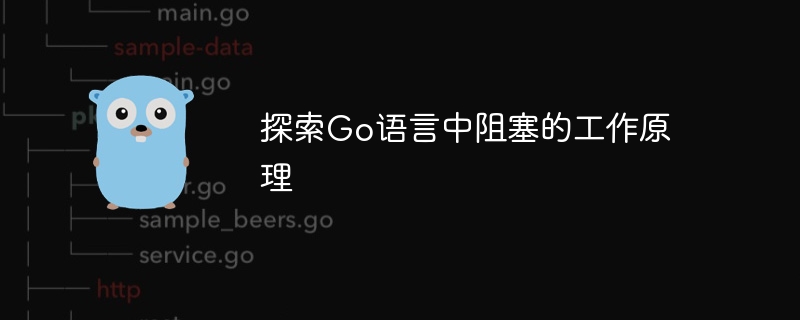

Title: In-depth exploration of the working principle of blocking in Go language and specific code examples
In the concurrency model of Go language, blocking is an important concept. Understanding the principles of blocking is crucial to writing efficient concurrent programs. This article will explore in depth how blocking works in the Go language and provide specific code examples.
Blocking means that a goroutine (a lightweight thread in the Go language) is suspended from execution until specific conditions are met. In Go, blocking usually occurs when a goroutine attempts to perform a blocking operation, such as waiting for a read or write from a channel.
The following is a simple example that demonstrates how to use channels for blocking operations in the Go language:
package main
import "fmt"
func main() {
ch := make(chan int)
go func() {
fmt.Println("开始发送数据")
ch <- 1
fmt.Println("数据发送完成")
}()
fmt.Println("开始接收数据")
data := <-ch
fmt.Println("数据接收完成:", data)
}In this example, the main The goroutine creates an integer type channel ch and starts an anonymous goroutine to send data to the channel ch. In the main goroutine, it will try to receive data from the channel ch. Since sending and receiving are synchronous operations, the main goroutine will be blocked before receiving data.
Blocking in Go language is implemented through channels. When a goroutine tries to send data to a full channel, the send operation will block until another goroutine receives data from the channel; similarly, when a goroutine tries to receive data from an empty channel, the receive operation will also block. Block until other goroutine sends data to this channel.
The runtime of the Go language will automatically manage blocking and wake-up operations between goroutines, and developers do not need to manually manage the blocking state.
Blocking is widely used in concurrent programming in the Go language, such as to achieve communication and synchronization between goroutines. By rationally using blocking operations, data exchange and sharing between different goroutines can be ensured to be safe and reliable.
Through the introduction of this article, we have deeply explored the working principle of blocking in the Go language and shown specific code examples. Understanding the concept of blocking and mastering the principles of blocking can help us write more efficient and reliable concurrent programs. In future development, I hope readers can make full use of the blocking feature and take advantage of the Go language in concurrent programming.
I hope this article can help readers deepen their understanding of the blocking mechanism in Go language and apply it in actual development.
The above is the detailed content of Explore how blocking works in Go. For more information, please follow other related articles on the PHP Chinese website!
 Usage of Type keyword in Go
Usage of Type keyword in Go
 How to implement linked list in go
How to implement linked list in go
 What are the Go language programming software?
What are the Go language programming software?
 How to learn go language from 0 basics
How to learn go language from 0 basics
 What are the methods to implement operator overloading in Go language?
What are the methods to implement operator overloading in Go language?
 What are the operators in Go language?
What are the operators in Go language?
 How to solve the 504 error in cdn
How to solve the 504 error in cdn
 How to open zip file
How to open zip file




